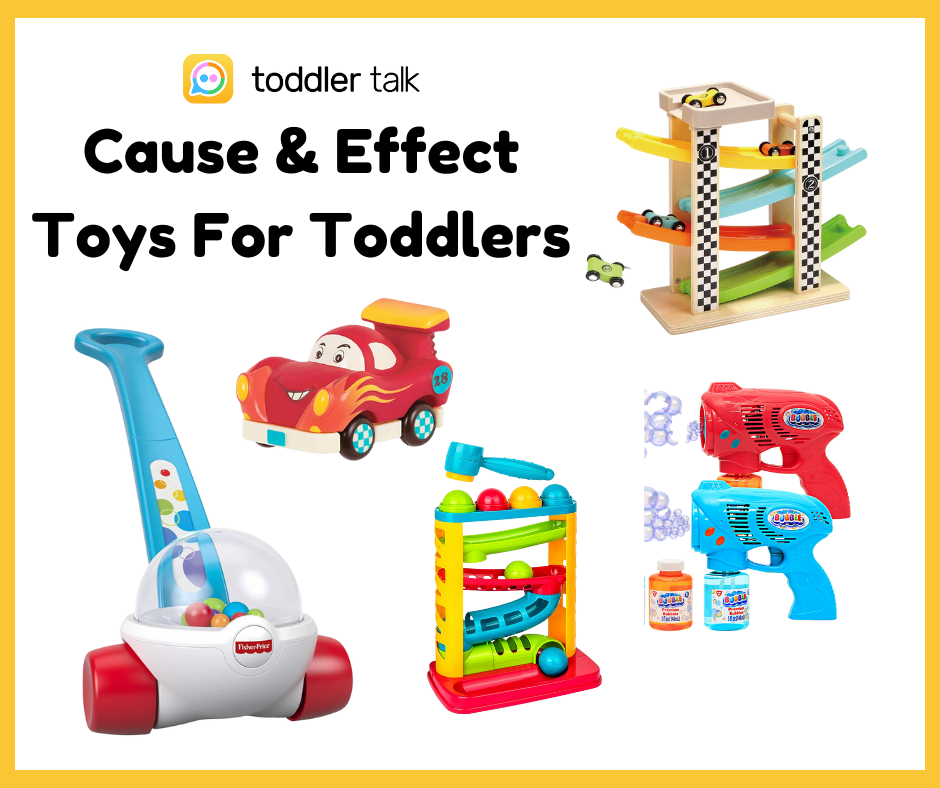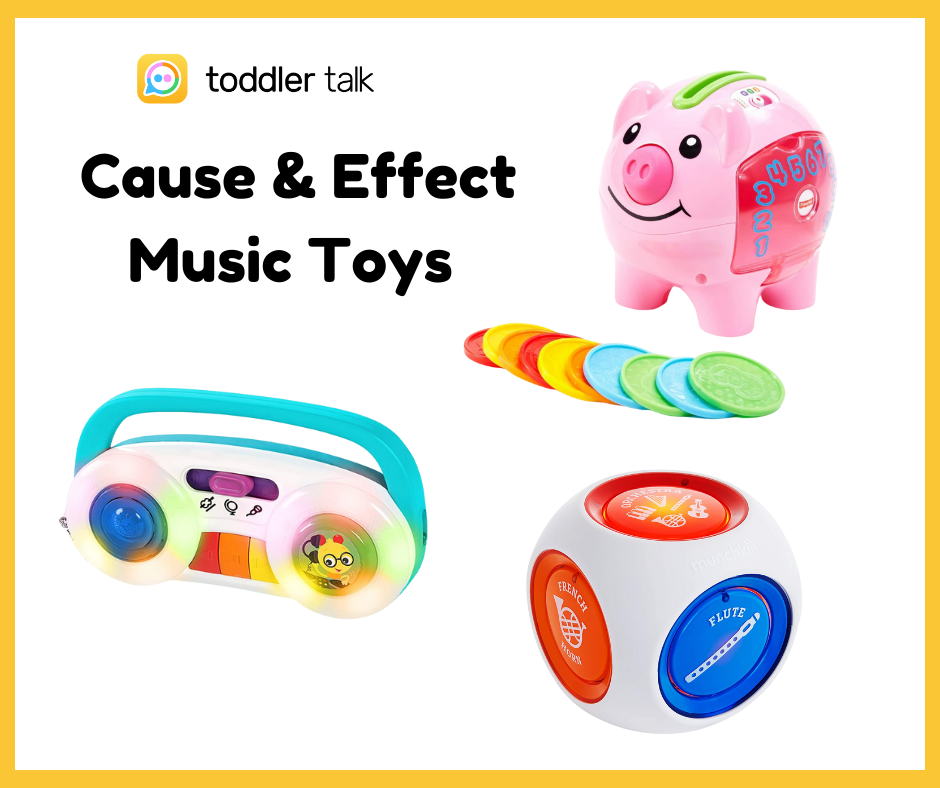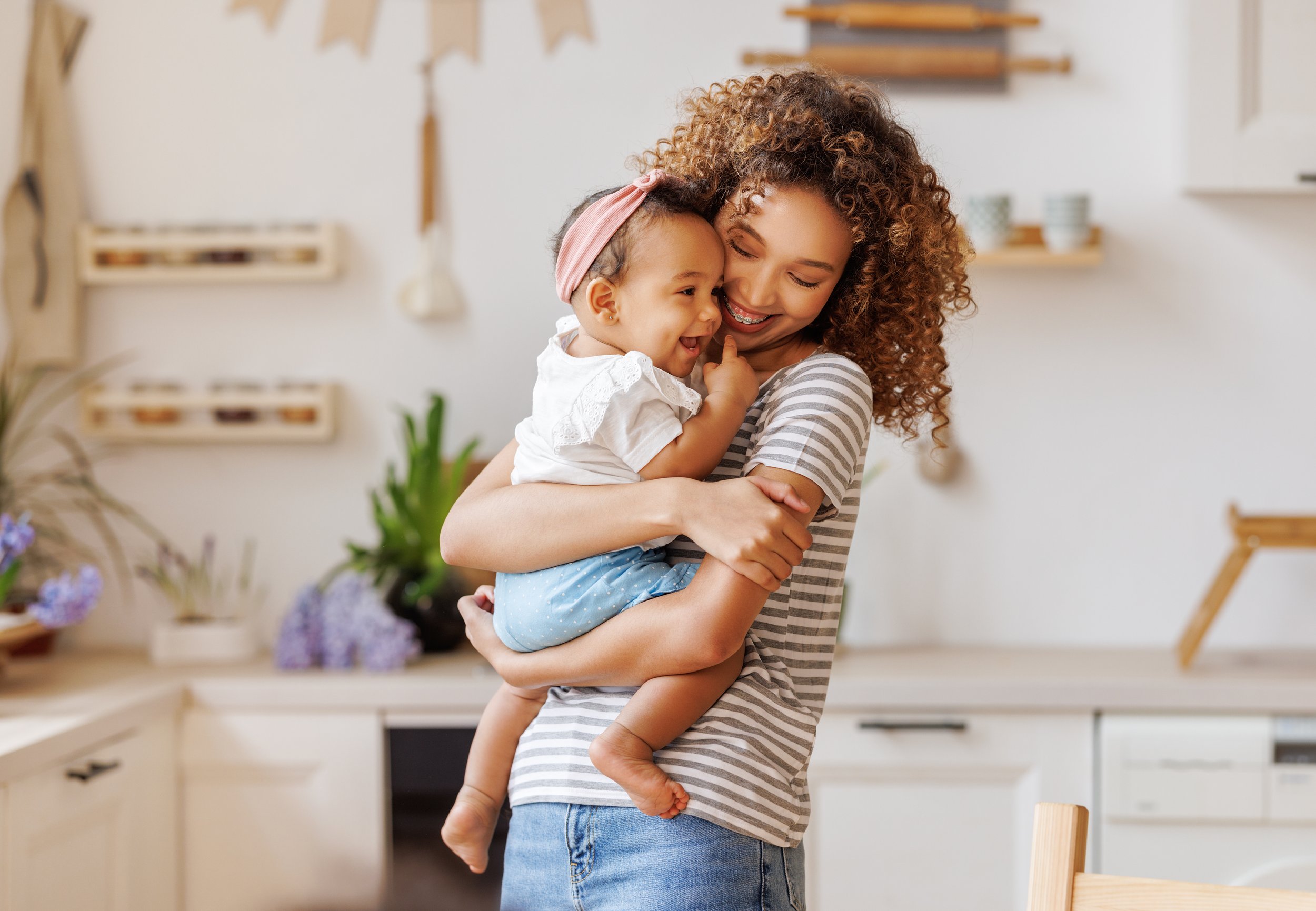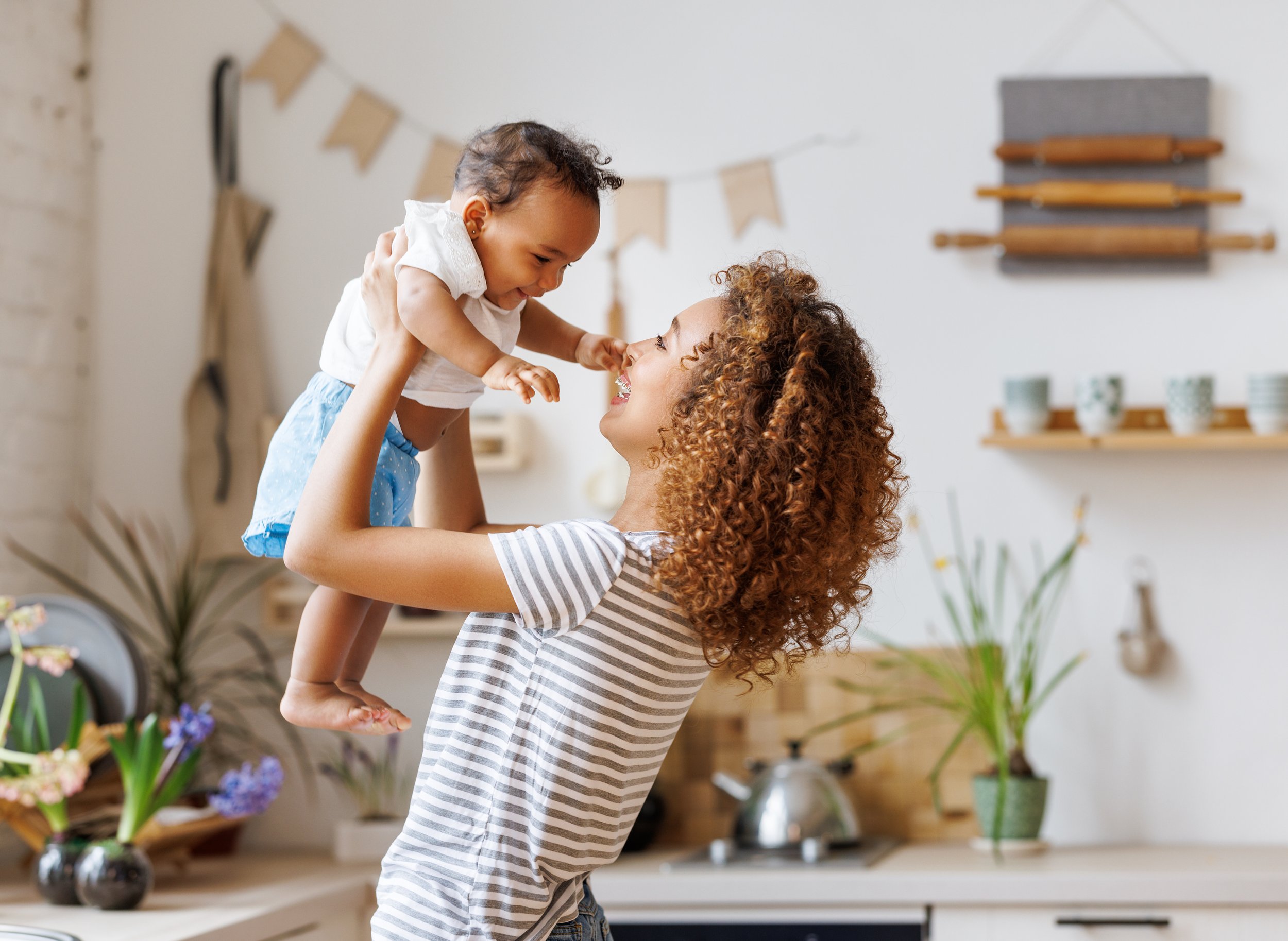Cause and Effect Toys
Understanding cause and effect is a very important skill in language development that comes well before talking. Playing with cause and effect toys is a great way to build this foundational skill for toddlers. For this reason, cause and effect toys for toddlers are often used in speech therapy sessions.
Learning Cause and Effect
The concept of cause and effect is the foundation for all communication and our interactions with others. Toddlers are learning that what they do causes an effect on their environment. When they say or do X another person responds to them either with an expression, an action, or saying something back.
Here are some early examples of cause and effect communication with babies and toddlers:
When your baby cries because they are hungry, you feed them.
When your baby smiles, you smile back.
When your baby makes a noise, you copy them.
When your baby looks towards a particular object, you talk about it.
When a child points to what they want, you give it to them
When a child asks you for “more,” you give them more snack
This post contains affiliate links. As an Amazon Associate, Toddler Talk earns from qualifying purchases. Proceeds help support these resources.
Let’s start off with 5 of the most common questions I hear from parents thinking about cause effect toys for toddlers:
1. What are cause and effect toys examples?
Music toys, pop-up toys, and other toys with buttons are great examples of cause and effect toys.
2. What do cause and effect toys teach?
Cause and effect toys teach the back and forth of language and communication, laying the foundation for conversation.
3. What age are cause and effect toys for?
I would argue that any toy can be used as a cause and effect toy, because everything we do can be interpreted as a cause and effect. So I want to answer this question by talking about the types of cause and effect toys that are appropriate for kids of different ages. You will select a different toy based on what you are teaching and what your child is interested in.
Babies - Music toys, light up toys (push a large button and something happens)
Toddlers - Car ramps, vehicle toys with go buttons, block towers
Preschoolers - Pretend play with other people (adding language, asking questions, making comments) pretending to cook and serve food for example
School Aged Kids - Games on the tablet, supervised cooking, building marble towers
Teenagers - Cell phones
4. Are bubbles cause and effect toys?
Yes, bubbles are an example of a cause and effect toy. Toddlers either blow to create the bubbles themselves, or they get to practice asking (causing) their parents to blow bubbles for them. The cause and effect relationship of bubbles is purely magical for toddlers. They can also practice cause and effect by popping the bubbles and making them disappear.
5. How do you play with cause and effect toys? I’d like some speech therapy tips
No matter what toy you pick, the goal will be the same. Your toddler does something and they witness the result. They are learning that what they do matters and they can initiate a wanted change or make things happen.
Before you buy cause and effect toys, explore the things you have at home
I’ll share my 10 favorite cause-effect toys for speech therapy in a minute, but first I want to tell you about 10 ways that your toddler can explore cause and effect using the things that you already have at home. Sometimes toddlers are even more interested in these non-toy play activities than the actual toys themselves. Keep in mind that there’s no one way that play ought to look, play happens whenever your toddler is engaged and having fun. Play is how toddler’s learn.
Light switches
Faucets
Soap and Shampoo making bubbles
Fans
Remotes
Pots and pans play
Sound play - Making sounds either saying sounds or banging/shaking objects
Opening and closing doors - see what’s inside
Knocking things over or dumping things out
Doing something dangerous and you get a reaction out of them (not as fun!!)
You could be the most fun cause and effect toy
Every time you react to something your child does, you are teaching them about cause and effect. It’s possible to practice this skill with nothing other than you and your chid. Here are some examples of things that you are probably already doing that are teaching your toddler about cause and effect:
Smiling when they do something silly
Telling them you’re proud or excited about something their did
Yelling when they do something dangerous
Making a sound back at them when they say something
Giving them a hug when they are crying or upset
Feeding them when they cry because they are hungry
Buying Cause and Effect Toys
Now you might not want to turn playing with the light switches into your toddler’s favorite game, and that’s totally understandable. Something different works for all of us and we all have our things we can handle and then the things that are simply too much.
Sometimes it’s just nice to mix up the routine and it can be motivating for both you and your toddler to have something new to play with.
Here are my 10 favorite cause effect toys for speech therapy
When working with cause effect toys in speech therapy it’s always important to be mindful to pick toys that cause effects that a toddler enjoys. Some toddlers may like (or be averse to) visual, audio, or tactile toys. So picking a toy that meets a toddler’s interest is important.
Written by: Stephanie Keffer, MS, CCC-SLP
© 2020-2025. Stephanie Keffer Hatleli, MS CCC-SLP. All Rights Reserved.
The content offered on ToddlerTalk.com is for informational purposes only. Toddler Talk is not engaged in rendering professional advice, whether medical or otherwise, to individual users or their children or families. No content on this site, regardless of date, should ever be used as a substitute for direct medical advice from your doctor, speech language pathologist, or other health professional. By accessing the content on ToddlerTalk.com, you acknowledge and agree that you are accepting the responsibility for your child’s health and well-being. In return for providing you with information related to home speech and language practice, you waive any claims that you or your child may have as a result of utilizing the content on ToddlerTalk.com.















